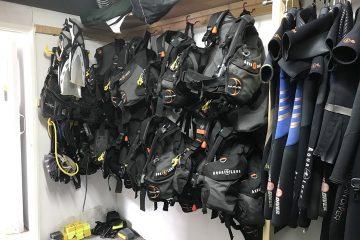Have you ever looked at a dive centre’s website and wondered what all the
courses are that they offer? Are you a qualified diver but don’t really know
what you can do next if you want to continue your diving education? Are
you interested in becoming a pro so you can travel or work in SCUBA?
Actually, it is all pretty uncomplicated and well laid out. PADI has designed
their system so you start at a point where you get qualified to dive. After
that you can then move up/along, getting more experience as you
progress. Basically, travelling from being an unfulfilled person with no
diving in their life to a happy and enriched diver.
Many people don’t realise that the main courses have to be completed in
order. Also, they have a referral option, which means you can start a
course in one place and finish it in another.
Let’s break it down into three areas;
Interested and want to get certified
Certified and keen to progress
Want to work
So, you’re interested and want to get your certification so you can
start diving? You need to do the following;
Try a Dive (TAD)– this is also known as a PADI Discover Scuba. It is
exactly what it says it is because you try diving. Whitstable Scuba offers
this as a one-hour session in Whitstable Swimming Pool. A Pool is a great
place to start as you can make sure you like it before signing up to the
Open Water course. It’s also an ideal present for someone, and kids can do
it too.
PADI Open Water course (OW) – people often refer to this as ‘getting
their PADI’. This is where you start as it’s the first qualification you get —
some theory, some pool training and then four dives to complete.
You are now qualified to dive to 18 metres and can go diving.
Right, you’re now certified and want to progress? Here are your next
steps;
PADI Advanced Open Water course (AOW) – this immediately follows on
from the OW course and will get your certification to dive to 30 metres. Five different dives that give you a taste of things like deep, navigation, and
night, increasing your skills and experience. The AOW course is ideal if you want to dive on holiday as it means you can dive sites that are deeper than
18m.
PADI Rescue Diver course (RD) – this course is designed to increase
your awareness and your ability to anticipate any potential problems and to be able to help deal with them. The RD course is essential if you want to
continue your education, but it is also very useful in building your
confidence in becoming a better diver. You have to have a First Aid
qualification to be able to get certified as an RD.
Speciality Courses – there are a whole group of courses known as
Specialties (often referred to as Specs) which allow you to focus your
interests in all sorts of different areas. You can do the Deep Diver Course
which teaches you to dive to 40m, or the Digital Photography Course which
shows you how to start capturing your memories, or even the Enriched Air
Nitrox Course which extends your dive time. Each course can lead on to
other Spec Courses, building up your diving experience.
PADI Master Scuba Diver (MSD) – if you get up to Rescue Diver and you
get a minimum of five specs, you can apply to PADI to become an MSD.
This qualification shows a high level of commitment, experience and skill
levels. It is also the top of the recreational ladder.
OK, you’ve decided that diving is for you and you want to teach
others? Here’s what you do next;
PADI Divemaster (DM) – you are now able to start your DM course. This
involves working closely with your instructor to assist with running courses and being a guide. It is not a quick course as there are several elements to it, but it gets you prepared in becoming an instructor. Many guides on boats are DM’s.
PADI Assistant Instructor (AI) – a short course that you need to do
before enrolling on the Instructor Development Course (IDC). You will
have to do the AI and the IDC, and then you can take the Instructor Exam
(IE).
PADI Open Water Scuba Instructor (OWSI) – once you have completed
the AI, IDC and passed the IE, you become a PADI instructor and are now
ready to start teaching all the courses that you took to get there.
PADI Master Scuba Diver Trainer (MSDT) – you can now extend your
instructor credentials and get speciality ratings which allow you to teach the specs. For example, you can get the Deep Diver Specialty Instructor rating and the Night Diver Specialty rating. You need a minimum of five to then apply to become an MSDT.
So, there you have it, there are actually three more levels AND a series of
technical courses, which we’ll talk about in later blogs. The PADI system is
brilliant because it gets you in the water on day one and you can do so
many different things within it. Also, of course, the best thing about it is that it keeps developing you, makes you meet new people and keeps you in the
water.
